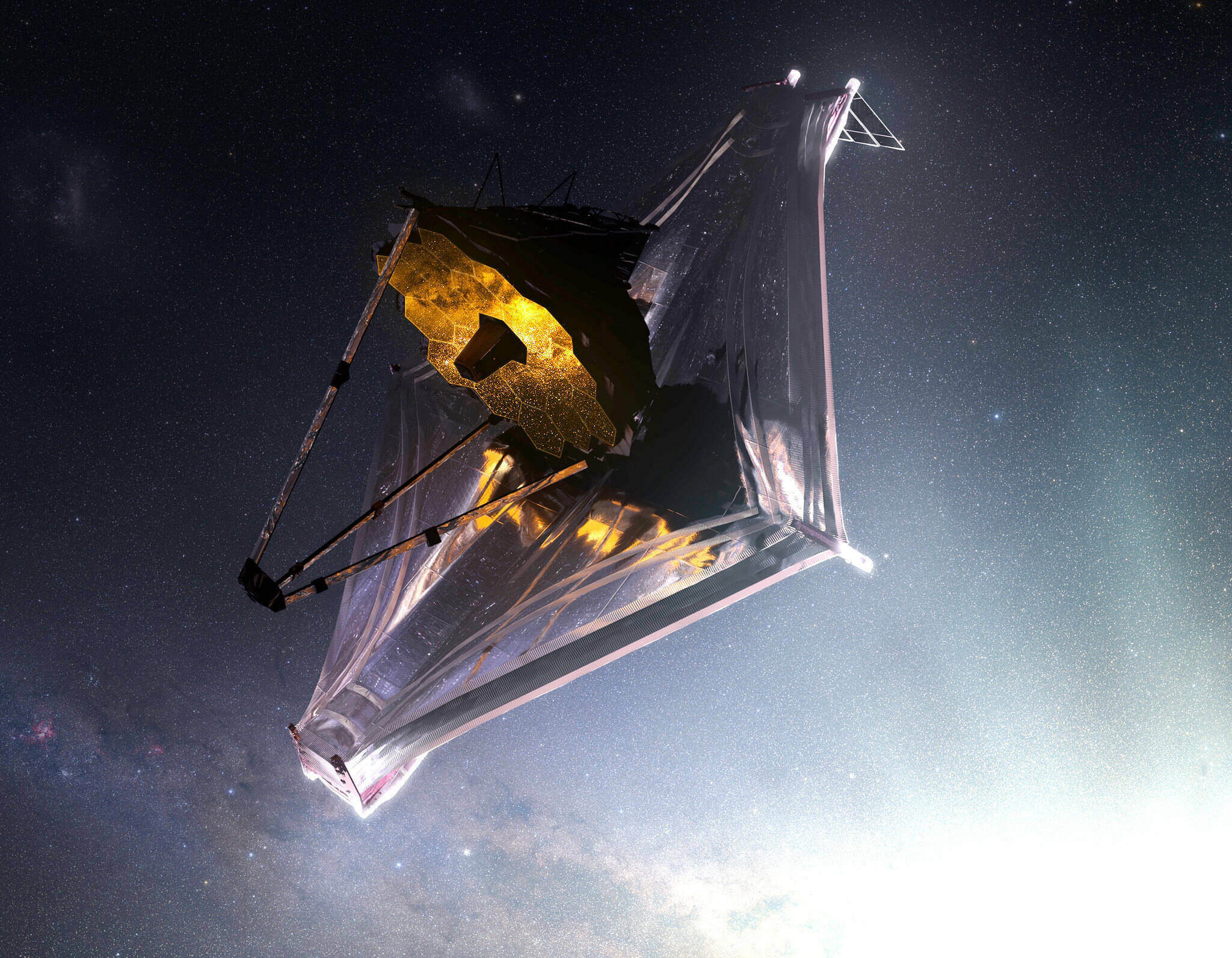Amanda Arvai ’04 leads the James Webb Space Telescope flight operations team. After the Webb’s expected fall launch, Arvai’s staff of 45 will keep tabs on the observatory’s health and safety.
Known as the “scientific successor” to the Hubble Space Telescope — still in orbit 340 miles above the Earth more than 30 years after its launch — the Webb will operate almost a million miles away. That distance will allow scientists to see much deeper into space and time, but it also means no astronauts making service visits of the sort that have repaired and preserved the Hubble.
Arvai joined the highly anticipated Webb project in 2014. With its launch now just months away, she spoke to the magazine about how her team prepares to make operations run smoothly — and how they simulate the unexpected.
What is your team’s role on the Webb Telescope project?
I think of it as the team that gets the keys once it’s up and commissioned, ready to go. We’re in charge of all of the scripts that command the observatory, as well as the procedures that govern them.
The scripts send the commands and then they do telemetry checks. Telemetry basically just means the data coming down from the observatory that tells us about its health and safety. There’s data points on the observatory, things that we care about that we want to be checking on. So we’re always monitoring those to make sure that it’s healthy.
What does the distance of this mission from Earth mean for your role?
It definitely increases the stakes, if you will, because there is no plan B, right? It’s a one-shot chance there that what we launch — the hardware is what we’re going to get. We always have the backup options of sometimes tweaking flight software or tweaking how we operate it. But those are significantly smaller in terms of scope than if you can just send an astronaut out there. No servicing missions like you have for Hubble.

Given the nature of this mission, is there a significant amount of new technology being brought to it, or is it more the tried and true that’s being adapted in a new way?
Significant improvements, particularly on the science instruments. For the most part, we have attempted to keep the tried-and-true spacecraft portion. So, when I say spacecraft, that’s thinking of the bus, the control system, the thermal systems, all of that, that every satellite is required to have just to physically operate. The idea is to keep that tried and true, but to keep the science instruments on the cutting edge.
During preparations, how do you simulate the potential for unexpected developments?
The team we call the RATs, the Rehearsal and Anomaly Teams. They are the ones that hit the buttons, if you will, that make the anomalies happen. If you just happen to notice a RAT walking down the hallway, I’ll tell you, everyone starts focusing on their machines because you know something’s going to happen.
We call it like lighting up like a Christmas tree. You’re looking at your screens and if everything is happy, it’s all green. That telemetry, if it's in the right range, it comes on their screen as green. But the moment that it’s not happy, it changes to red. That’s when we start triaging.
How will your team manage its day-to-day duties after the launch?
Once we get into normal operations, we’ll have two contacts with the observatory a day. Those contacts are going to be four hours each, and that gives us time to check in with it and make sure that it’s healthy, to download everything that's on its recorder. And all that recorder data is going to be both science, as well as the engineering telemetry that tells us about the health and safety. We take that science data, pass it on to our scientists, and they’re going to do all that post-processing and magic that make the science that we all know and love.
From my team’s perspective, then we also take that engineering data, and that’s what we're going to be spending our time looking at over and over and over, trying to see any trends, trying to analyze it, trying to see what we can do on our behalf to both make the mission safer, but then also extend its longevity too.
What happens when you encounter something unexpected?
It’s all about taking it in stride. We practice, practice, practice, and make sure that everything we can do to prepare, we do, so that we have no regrets there, right? When things do inevitably look potentially slightly different than what we had hoped or expected, just take that deep breath and say, OK, what does this mean? Why would we be seeing this?
Sometimes our nerves are so intense in flight operations. You know what’s at stake. You don’t want anything to go wrong. You just want to be perfect, right? But it’s OK to take a breath and just look at the data. And in my experience, there’s usually a good explanation that you can work through.
Interview by Jason Kelly ’95, an associate editor of this magazine. Read about Tom Harkins ’08, another engineer on the Webb project.